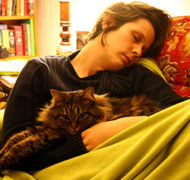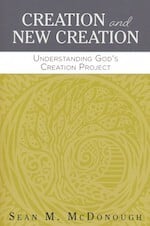Resting in the Nap Zone
Blog / Produced by The High Calling
A few years ago, I had three surgeries within an 18-month time frame, followed by a fourth surgery a year later.
During each of my pre-surgery appointments, I talked with nurses about what I could and couldn’t do following surgery. Rest was always on the list of do’s. In fact, I distinctly remember the nurses encouraging me to nap.
“Don’t be surprised if you continue to be tired six months or even up to a year after your surgery,” they advised. “It’s OK to nap if you get tired.”
So I did.
During those weeks of recovery I began granting myself permission to rest. In the days immediately after being released from the hospital, my body was still recovering from anesthesia. I dozed in the morning, napped in the afternoon, and headed to bed before prime time.
Gradually, I weaned myself of the morning catnap, but when I hit the wall by mid-afternoon, I didn’t feel guilty indulging in a lengthy slumber. At least not in the first few weeks.
At the end of six weeks, I went back to work, surprised by how my body still craved rest. I was lucky though. I worked from home, so I had the flexibility to occasionally steal forty winks.
But flexibility does not necessarily equal freedom. My Protestant work ethic nagged at me. Taunted me. What do you mean you want to take a siesta? You’re not going to be productive? How lazy! Despite admonition from trained healthcare professionals, I second-guessed the wisdom of letting my body fully recuperate.
Months later, when I thought everything should be back to normal, I continued napping. I just felt guilty doing so.
Then something clicked. Four or five years earlier I had read Brain Rules by John Medina. Rule #7 addresses ways the brain benefits from sleep.
Medina refers to “a period of time in the midafternoon when we experience transient sleepiness.” He goes on to say, “It can be nearly impossible to get anything done during this time, and if you attempt to push through, which is what most of us do, you can spend much of your afternoon fighting a gnawing tiredness.”
The “nap zone” matters because our brains don’t function well during this time. Medina cites research by NASA that showed a boost in a pilot’s performance after a mere 26-minute nap. He mentions two additional studies that showed similar performance improvements after naps of 30-45 minutes, respectively.
Clinical research aside, I still thought of napping as a guilty pleasure to be kept hidden until someone I’d met in real life outted himself as a napper. Michael Hyatt, best-selling author of Platform: Get Noticed in a Noisy World and former Chairman and CEO of Thomas Nelson Publishing, has tweeted, blogged, and even produced a podcast on the Secret Power of Naps.
Though it took a few years, I now embrace what President Lyndon B. Johnson regularly practiced. When afternoon shadows grow long, the sun streams in the windows, and my morning caffeine buzz has long worn off, you might not be able to reach me.
If the blinds are closed and I don’t answer the phone or come to the door, it’s very likely I’m snuggled up in my green fuzzy blanket, listening to music on my phone, and resting my eyes.
For at least 26 minutes.
Image by Martin Cathrae. Used with permission. Sourced via Flickr. Post by High Calling Facebook Editor, Cheryl Smith.
EDITOR'S NOTE: On Thursday mornings in August, we are exploring rest, what it means to quiet our minds, our bodies, our spirits. Whether we set a side a full day's Sabbath or just a moment of silence, our homes, workplaces, communities, and churches all benefit when we take time to stop. Join us each week to tell us your stories of finding rest in the busyness of life.
Posts on rest:
- Resting My Mind by Dena Dyer
- Silence: Resting from Life's Noise by Dan King
- Resting in the Nap Zone by Cheryl Smith
- Taking a Rest from Knowing It All by David Rupert
- The High Calling of Rest by Charity Singleton Craig





